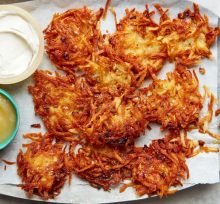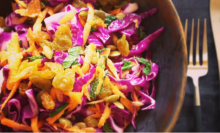
How To Get Your Olive Oil Benefits In This Simple Heart Healthy Recipe
Updated June 14th 2023
Extra Virgin Olive Oil (EVOO) : A Great Food And Much More
Extra virgin olive oil has been praised as one of the best oils for a healthy lifestyle, but is it just a foodstuff or can it also be considered a medicine? The truth is that extra virgin olive oil is both. This highest quality olive oil is full of polyphenols that are known to have anti-inflammatory properties and can help reduce the risk of chronic diseases. The benefits that come with consuming extra virgin olive oil daily are endless, from improving heart health to promoting brain function. Incorporating this amazing oil into your diet can not only enhance your meal’s flavor but also provide countless health benefits, making it a wonderful foodstuff and medicine.
Diet For Heart Health.
A diet rich in fruits, vegetables, whole grains, and beans is good for your heart. One way to make this diet more delicious and satisfying is cooking with extra virgin olive oil. Extra virgin olive oil has many benefits that make it good for your heart. It is high in healthy monounsaturated fats and polyphenols, the antioxidants which help to lower bad cholesterol levels and reduce inflammation. In addition, extra virgin olive oil is a good source of vitamin E, a nutrient that helps to protect cells from damage.
When used in cooking, extra virgin olive oil can help to boost the flavour of lentils and other plant-based foods. In addition, it can also help to keep lentils moist and prevent them from drying out. As a result, using extra virgin olive oil is a great way to make a heart-healthy diet more enjoyable.
Why Include Lentils In Your Diet For Heart Health?
Lentils are a type of legume that are often used in soups and stews. They are an excellent source of protein and fibre, and they can also help to regulate blood sugar levels. One of the best ways to cook lentils is to use extra virgin olive oil. Olive oil is a healthy fat that can help to improve cholesterol levels and lower blood pressure. It is also a good source of antioxidants, which can help to protect against heart disease and cancer. When using olive oil with lentils, it is important to choose the best olive oil like Morocco Gold extra virgin olive oil.
Extra virgin olive oil is made from the first cold pressing of olives, and it has a higher concentration of antioxidants than other types of olive oil. It is also less processed, which helps to preserve its healthy nutrients.
Ingredients
- 2 tablespoons Morocco Gold extra virgin olive oil, plus more for serving
- 1 small yellow onion, finely chopped
- 1 medium carrot, peeled and finely chopped
- 1 garlic clove, finely minced
- Kosher salt and freshly ground black pepper, to taste
- 1 cup brown lentils, rinsed
- 1 tablespoon tomato paste
- 3 thyme sprigs
- 1 fresh bay leaf
- Pinch crushed red pepper flakes
- 5 cups water
- 8 ounces short tubular pasta (such as ziti, trenne or rigatoni)
- ⅓ cup whole milk
- 1 tablespoon finely chopped flat-leaf parsley
- Grated Parmesan, for serving
Instructions
- In a medium saucepan, heat the extra virgin olive oil over medium-high heat. Add the onion and carrot, and cook, stirring often until soft but not brown, 3 to 5 minutes. Add the garlic and cook for 1 minute. Season with salt and pepper, and add the lentils, tomato paste, thyme, bay leaf and red pepper flakes. Cook for 3 to 4 minutes to allow the flavors to meld. Add the water and bring to a boil. Reduce the heat to medium low and simmer with the lid slightly ajar, until the lentils are tender, 40 to 45 minutes.
- Bring the lentils to a boil and add the pasta and milk. Cook, uncovered, stirring often so that the pasta doesn't stick to the bottom, until the pasta is al dente and the liquid has reduced to a creamy, ragù-like sauce, 10 to 12 minutes. Discard the bay leaf and thyme sprigs.
- Divide the pasta among serving bowls and garnish with the parsley, Parmesan and more Morocco Gold extra virgin olive oil. Whoila you have pasta with lentils which is not only tasty but a healthy snack.
The lentil plant (Lens Culinaris) originates from Asia and North Africa and is one of our oldest sources of food. A cousin to the pea and a rich provider of protein and carbohydrates the lentil is also a good source of calcium, phosphorus, iron and B vitamins making it an important diet staple the world over and an ideal companion to Morocco Gold extra virgin olive oil.
Lentils can be bought, cooked and ready to eat, in a can or pouch, and are ideal for adding bulk to salads and sides. Most commonly, lentils are bought dried and ideally will be firm, clean and unshrivelled. The type of lentil you choose will depend on intended usage:
Green and brown: Ideal for warm salads, casseroles and stuffing as they tend to retain their shape after cooking.
Puy lentils: These grey-green lentils, grown in the French region of Le Puy, are often more expensive than other common cooking varieties and are thought to be superior in texture (which they retain after cooking) and taste. This makes them the perfect accompaniment to more expensive ingredients such as fish and game, as well as sausages.
Red split lentils: When cooked these lentils form a rich purée and therefore are superb for thickening dishes such as soups and casseroles. They are also often cooked with spices to make the Indian dish dhal.
Yellow lentils: Also known as yellow split peas.Being quite similar to red split lentils, the yellow variety are used in a similar way and are great for adding colour to winter dishes. They are also traditionally stewed to a purée, typically in ham stock, in the north-east of England in a dish called pease pudding.
Extra Virgin Olive Oil With Pasta & Lentils
Here is a warm, homey Neapolitan bowl for cooking with extra virgin olive oil. By cooking the vegetables together with the pasta rather than in a separate pot of salt water the pasta starch is not lost but instead released into the cooking liquid to create a rich, creamy sauce.
Important Disclaimer
The information provided on this website is for general informational purposes only. All content, including text, graphics, images, and information, is presented as an educational resource and is not intended as a substitute for professional medical advice, diagnosis, or treatment.
Please consult with a qualified healthcare provider before making any decisions or taking any action based on the information you find on this Website. Do not disregard, avoid, or delay obtaining medical or health-related advice from your healthcare provider because of something you have read on this Website.
If you think you may have a medical emergency, call your doctor, go to the nearest emergency department, or call emergency services immediately. We are not responsible for any adverse effects resulting from your use of or reliance on any information or content on this Website.
By using this Website, you acknowledge and agree to this disclaimer in full.



